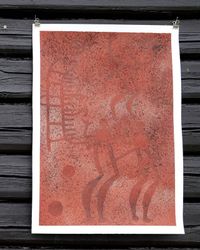The people most often depicted are men, sometimes women, often with thick round calves. Despite the many scientific articles and books, we still have to guess what exactly the images represent: people, animals, in everyday scenes (such as hunting, agriculture, trade, battle)? rituals perhaps? More is slowly but surely becoming known about the origins of these peoples who inhabited these coasts in the Bronze Age.
Recent DNA research, 2015 and Population structure research 2024 shows that the current European populations largely descended from Anatolian farmers and Yamnaya hunter/gatherers, who moved from present-day Ukraine-Caucasus to the west and north of Europe 5000-3000 years ago. This could partly explain why there such great similarity between the images we find in large parts of Europe, from Ukraine to Kola peninsula to Norway and Sweden.
Retrospectively, the above depicted works have taken on more significance, as the origin of Western European civilization. E.g. the Yamnaya couple (#5) as our Adam and Eve, who (#4) were chased out of the Garden of Sweden.


